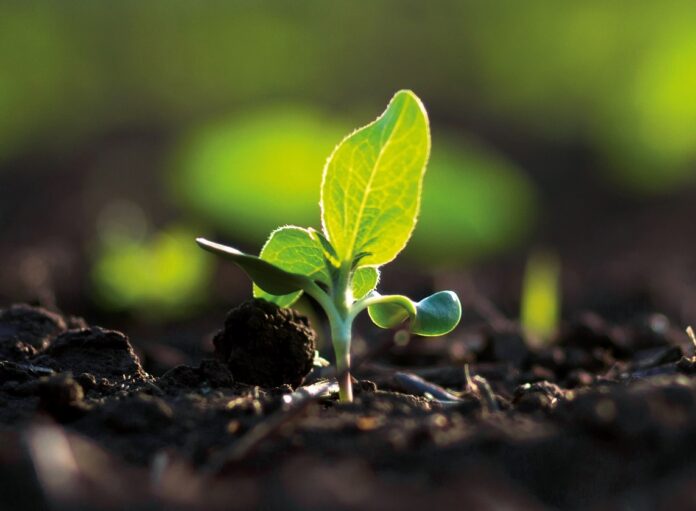
Published in June, the World Bank’s global groundwater report, The Hidden Wealth of Nations: The Economics of Groundwater in Times of Climate Change, highlights groundwater as a critical resource with the capacity to improve water, food, and economic security. Both over- and under-used depending on the region, the report finds that if groundwater is to be managed sustainably, far greater data is required to drive sound policymaking.
Aimed at advancing understanding of the value of groundwater, the costs of mismanagement, and the opportunities to leverage its potential, the key message of the report is that groundwater needs to be made a political priority, so that it may be managed carefully through integrated cross-sectoral action to benefit society, the economy, and the environment.
The report presents groundwater as nature’s insurance policy – a resource that requires careful attention in terms of the safeguarding of its quality and quantity to protect people’s health and livelihoods when surface water is unreliable, a problem exacerbated by climate change and the resultant changes in precipitation patterns.
Globally, groundwater provides 49% of the water withdrawn for domestic use and around 43% of all water withdrawn for irrigation. Millions of farmers depend on groundwater irrigation to produce 40% of the world’s crops. However, the report finds that, in most cases, groundwater is undervalued, overexploited, and mismanaged. The report’s authors argue that only by valuing the benefits of healthy groundwater systems will equitable management and provision be achieved.
A hidden and often misunderstood resource, this report identifies groundwater as a key asset in a country’s portfolio, with the potential to reduce poverty and promote resilient and equitable growth.
Regional disparities
With groundwater underutilised in Sub-Saharan Africa, the report highlights the value of this untapped resource for irrigation. Food security is a concern in most African countries, with nearly 25% of the population suffering from severe food insecurity. Yet, in Sub-Saharan Africa local shallow aquifers represent more than 60% of the groundwater resource. However, less than 5% of agricultural land is irrigated, and less than seven percent of irrigated land utilises groundwater.
The report states that although this water could be suitable for the irrigation of an estimated 40 million hectares, it is currently used to irrigate only 12.8 million hectares, mostly located in just five countries – Mauritius, Madagascar, Sudan, Ethiopia, and South Africa. The report estimates that groundwater irrigation in just 13 Sub-Saharan African countries could increase the hectarage of productive agricultural land 120-fold.
While the report accepts that more work is required to refine these estimates, it states that sustainable use of groundwater has the potential to improve the livelihoods of approximately 40% of rural populations in some of the world’s poorest countries.
In contrast, in the Middle East and South Asia, where irrigation is a key component of agriculture, up to 55% of irrigated land uses groundwater. As a result, approximately 92% of transboundary aquifers in the region show signs of groundwater depletion.
The report draws attention to the vulnerability that societies reliant on depleted groundwater stocks face in the wake of climate shocks, exposing economies to ‘exponential risks’, including maladaptation. Additional risks come from deteriorating groundwater quality because of rapid urban expansion, unregulated industrial sites, and inadequate agricultural practices.
Ameliorating risk
A significant element of this research by the World Bank is the development of a new global typology that has been developed and validated to enable novel global economic analysis of groundwater assets. This global dataset consolidates, extends, and refines existing global datasets to increase the understanding of aquifer types and the risks they present to food security, and the potential for development and economic security. Until now, there has not been a systematic and data-supported approach capable of capturing key characteristics of aquifers and how their condition impacts resilient development and poverty reduction.
The report finds that a lack of knowledge regarding the economic accessibility of groundwater irrigation for individual farmers, and groundwater’s ability to buffer seasonal variations and climate shocks, has resulted in it being an undervalued resource.
On the subject of accessibility, the report notes that access to pump technology and the energy required to pump water is leaving those most in need least able to access groundwater resources. The authors suggest that solar-powered pumping for irrigation, particularly for shallow groundwater abstraction, could help narrow the gaps in access to electricity, water supply, and irrigation, noting that in Sub-Saharan Africa in particular, gaps in access to water and electricity tend to overlap, especially in rural areas, and are the ‘leading drivers of multidimensional poverty’.
In addition to the benefits that sustainable groundwater extraction could have for agriculture, the report recognises the increasing awareness of the value of Groundwater Dependent Ecosystems (GDEs) in improving climate resilience, as well as supporting livelihoods. Furthermore, it draws attention to the buffer that groundwater can provide for urban populations and the role that well-managed groundwater can play in city plans to avoid the day-zero events with which some of the world’s megacities are grappling.
As a document, The Hidden Wealth of Nations report underlines the incredible value of groundwater to help the world build climate resilience, but warns that, if this potential is to be realised, action must be taken now to protect groundwater resources. This will require political will. Most nations exploit groundwater from transboundary aquifers, yet, to date, only six treaties targeting transboundary aquifers have been ratified compared with hundreds of transboundary rivers and lakes.
A call for action, the report finds that better understanding of the interdependencies of GDEs, climate change, rural livelihoods, food security and social stability must be developed and embedded in integrated policies to maximise the benefits of this precious resource to reduce trade-offs and prevent inadvertent consequences that could hinder development.
By Erika Yarrow-Soden
More information







